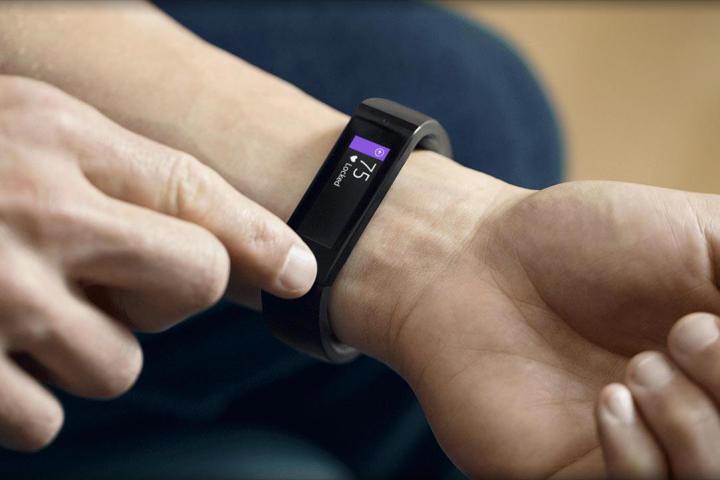
But I stand by those statements made all of seven days ago — in fact, if anything, Microsoft’s entry plays into them nicely.
The fight for the high end of the market is still wide open.
Being Samsung, for instance, means never having to pick a side. You just make something everyone. That means smartwatches, fitness bands, smart fitness bands — you know, a tailor-made wearable for each of the Earth’s 14 billion wrists. Being Google, on the other hand, means developing the software and letting your numerous hardware partners fight it out amongst themselves.
And then, of course, there’s Apple, which has taken on the Herculean task of getting people interested in the watch market, which it played a large role in decimating. And how will Cupertino accomplish such a feat? By making a really, really pretty watch, naturally.

Analyzing Microsoft’s wearable play involves taking a step back into a bygone era called “2004,” when the company launched Smart Personal Object Technology, or SPOT, which allowed household devices to access MSN Direct over the FM band. SPOT powered a broad array of products, from coffee makers to weather stations, but the biggest play by far were watches. Like tablets before them, the products were ultimately doomed by a combination of bad timing and less-than-ideal technology.
With the Band, Microsoft isn’t making that mistake again. It’s jumping into a proven space where other companies are already succeeding. Unlike smartwatches, fitness trackers are already out there in droves, thanks primarily to the successes of companies like FitBit and Jawbone. Microsoft is ready to capitalize on that success and up the ante with some game-changing features, including heart-rate monitoring built directly into the band, and a UV monitor for keeping track of sun exposure.
Unlike smartwatches, fitness trackers are already out there in droves.
What truly makes the Band a populist device, however, is its universal compatibility. While the Apple Watch will only work with Apple phones, the Microsoft Band will work with iOS, Android and Windows Phone.
Following Apple’s “closed-ecosystem” approach would almost certainly have been a death sentence for the Microsoft Band. After all, according to IDC’s numbers, Windows Phone was in a distant third for mobile operating system market share in Q2 2014 at around 2.5 percent — a 0.9-percent drop over the same time last year. Sure, Microsoft continues to have faith in its mobile operating system — just not enough faith to risk the health of other emerging product lines.

Making the Band compatible with three operating systems opens it to around 99 percent of potential smartphone users (sorry BlackBerry). And, it just so happens that those Windows Tiles scale pretty nicely to that 1.4-inch color display. Between the last couple of Windows desktop operating systems and the Xbox One, chances are pretty decent that even the staunchest of Windows Phone haters have had some experience with the UI formerly known as Metro.
Unlike some past launches, Microsoft has made some pretty savvy moves in launching a new device this time out. While I still believe low-end fitness trackers are on their way to ubiquity, the fight for the high end of the market is still wide open. The Microsoft name still carries some cache among many consumers, especially when placed against relative unknowns like Jawbone and FitBit.
And at the end of the day, the company isn’t competing directly against Apple here. The two companies are offering two very different products with different feature sets, different usages and different price points. That’s the best-case scenario for both companies, and the bare-wristed consumer.


